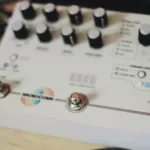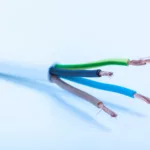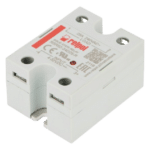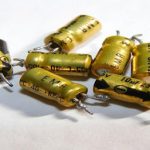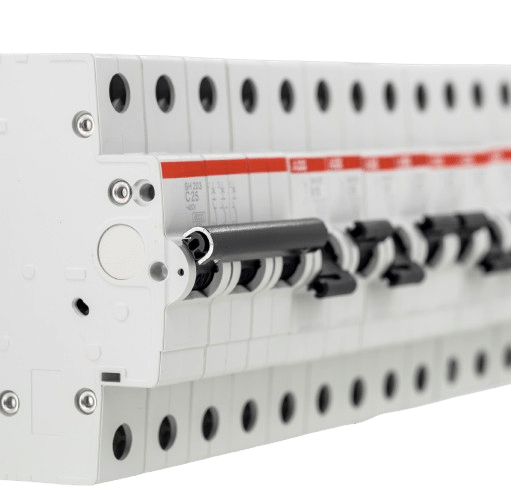
Introduction
Power relays are fundamental components in both industrial and domestic electrical systems, acting as switches that control the flow of electricity––ensuring the reliability and safety of electrical systems. Their primary function is to enable a small electrical signal to control a larger power circuit, making it an indispensable component in various equipment, including motors, heaters, and lights. Understanding the basics is essential for engineers, technicians, and enthusiasts seeking to protect against potential electrical faults and ensure equipment safety. This article discusses the basics of power relays, their popular types, how they work, versatile applications, and expert tips for choosing suitable relays for specific needs.
Introduction to Power Relays and Their Significance
A power relay, often simply called a relay, is an electromechanical, reliable device that opens or closes contacts to control and regulate the flow of electricity in a circuit. By leveraging a low-power signal and integrating power factor correction systems, the high-performance relay can switch a much higher power circuit, serving as a critical component in various applications––from simple household appliances to complex security systems and industrial machinery. The significance of energy-efficient power relay’s lies in ensuring safety, enabling control and automation, improving energy efficiency, and offering versatility in design and implementation.
Comparing Regular Relays vs. Power Relays
Regular relays are general-purpose traditional relays designed to switch smaller currents (typically up to 10A) and are often used for switching low-power applications where the switching frequency is relatively low. On the other hand, power relay’s are specialised relays designed to switch higher currents (10A and above, often up to several hundred amperes). They are used in applications that require handling larger loads. Additionally, they offer unprecedented benefits than traditional relays in terms of durability, higher switching speeds, reliability, smaller size, and low power consumption.
How Do Power Relays Work? Explaining Their Fundamental Operational Principle
The basic operation of a power relay involves an electromagnet that, when energised, attracts a movable armature to either make or break a connection in the electrical circuit. The ability to control high-power circuits with low-power signals makes relays incredibly useful in various applications, providing a means of isolation and control. The primary components that render the power relay’s operation include:
- Electromagnet: The core component that generates a magnetic field when current flows through the coil.
- Coil: Upon flowing an electric current through the coil, it generates a magnetic field.
- Armature: The magnetic field attracts the armature, causing it to move and either open or close the contacts.
- Contacts: The contacts are the conductive part of the relay that opens or closes the circuit.
Most Popular Types of Power Relays: Unleashing Their Broad Range Varieties
Power relays come in various forms, each designed for specific applications and operational criteria, including:
Electromechanical Relays (EMRs)
EMRs use an electromagnetic coil to move contacts, allowing or interrupting the current flow mechanically. They are known for their reliability and are widely used in applications where robustness is critical.
Solid State Relays (SSRs)
Solid state relays switch circuits electronically without moving parts, offering faster operation and greater reliability in environments where mechanical failure is a concern. They are ideal for high-speed switching applications.
Reed Relays
Reed relays consist of reed switches encapsulated within a coil. They are used for their compact size and fast switching capabilities, making them suitable for telecommunications and security systems.
Signal Relays
These relays are typically used for switching low-power signals in electronic circuits. A signal relay is designed to handle small currents and voltages and, hence, is suitable for applications such as telecommunications, industrial controls, and automation systems. Signal relays often have small physical dimensions and low power consumption.
Timer Relays
Timer relays incorporate timing functions into their operation to control the timing of events or operations within a system. These relays can be configured to delay the activation or deactivation of a circuit for a specific period, or they can be programmed to operate in cyclic or repetitive modes. Timer relays find applications in various fields, such as lighting control, HVAC systems, motor control, and industrial automation.
Hybrid Relays
Hybrid relays combine the features of different types of relays into a single device. For example, a hybrid relay might incorporate the characteristics of both signal relays and power relays, allowing it to switch both low-level signals and high-power loads. These relays are often used in applications where space is limited or where multiple functions need to be integrated into a single component.
Thermal Relays
Thermal relays operate based on the thermal effect of electrical current. They are primarily used for overload protection in motors and other electrical devices.
Choosing the Right Power Relay: Exploring the Crucial Selection Criteria
Selecting the appropriate power relay involves considering several factors to help you choose the best one for your application, balancing technical requirements, reliability, and cost considerations. The following parameters should be ascertained before buying a specific power relay, including:
- Load Type and Voltage Rating
- Contact Configuration
- Reliability and Durability
- Size and Mounting
- Switching Requirements (Speed and Frequency)
- Operating Environment (Temperature, Humidity, Vibration)
- Coil Voltage and Power Consumption
- Cost and Brand.
Versatile Applications of Power Relays: Use Cases and Success Stories
There are versatile components found in numerous applications that require high power to handle the load. Some typical applications including:
- Automotive Systems: Power relays are used to control the headlights, air conditioners, and power windows in automotive systems.
- Industrial Machinery: Found in machine control systems, process control, and automation.
- Telecommunications: In telecommunications, power relays can be used for switching and signal control applications.
- Power Distribution Panels: Power relays are commonly found in power distribution panels to control the electricity flow to different circuits or loads. They help in managing power distribution efficiently and safely.
- HVAC Systems: These relays are best for switching heating, ventilation, and air conditioning systems on or off based on temperature or other environmental conditions.
- Medical Equipment: Many medical devices rely on power relays to switch power to critical components such as motors, pumps, heaters, and lighting systems. Reliability and precision are crucial in such applications to ensure patient safety and the proper functioning of the equipment.
- Security Systems: Power relays are integrated into security systems to control the operation of alarms, access control devices, surveillance cameras, and other security-related equipment.
- Test and Measurement Equipment: Power relays are used to switch between different test configurations, control the power supply to test specimens, and manage the routing of signals within the test setup.
- Home Appliances and Consumer Electronics: Power relays are also significant in home appliances and consumer electronics, including televisions, PCs, refrigerators, washing machines, and ovens.
Takeaway
Power relays are pivotal in the control and management of electrical systems, offering a reliable means of switching high-power circuits with low-power signals. Understanding the types of relays, their operation, and their applications can help in selecting the right relay for your needs, ensuring safety, efficiency, and reliability in electrical systems. Whether for industrial, automotive, or domestic applications, power relays are indispensable components in the modern electrical landscape.










